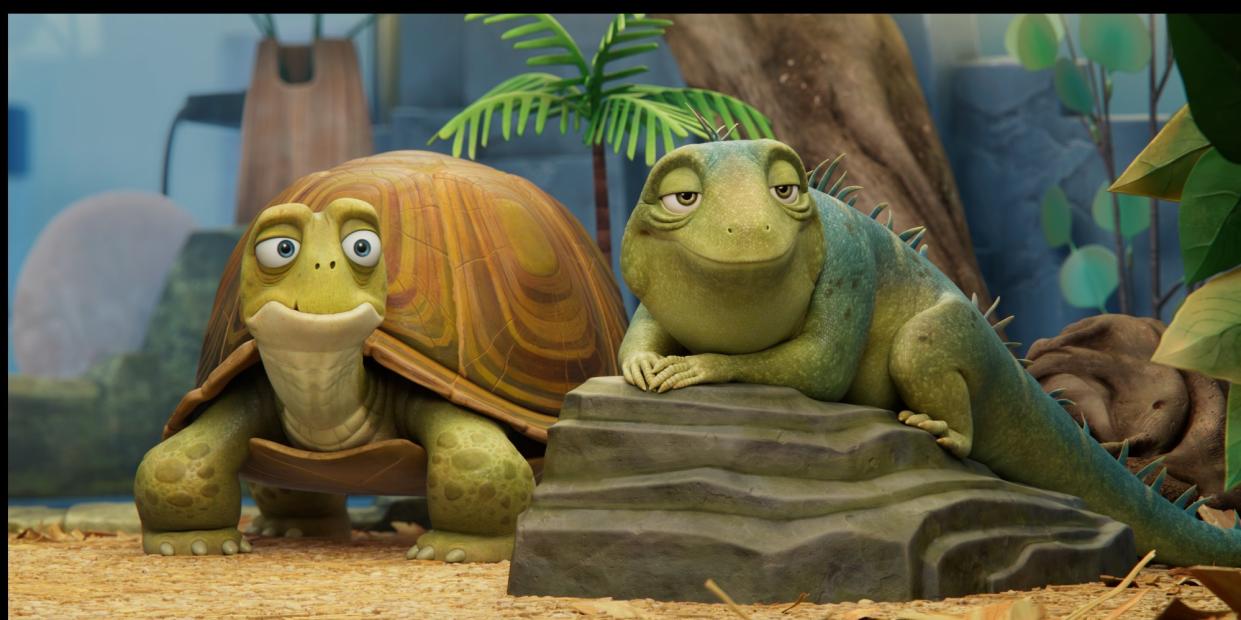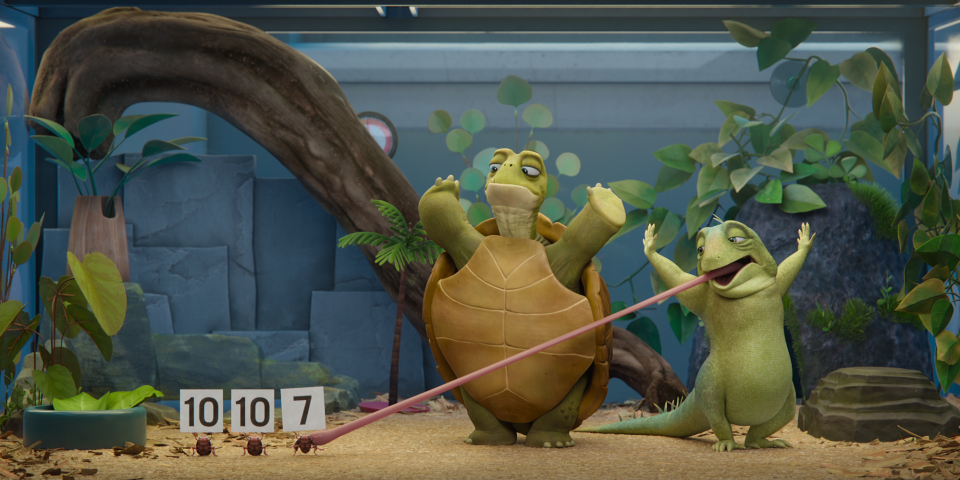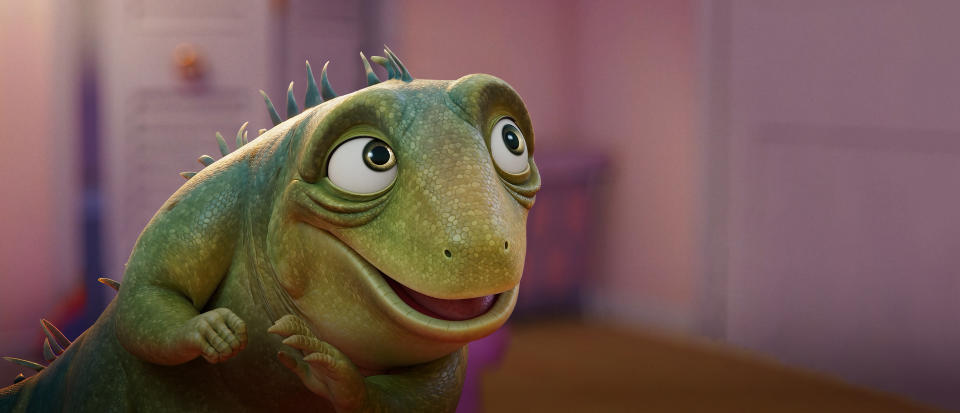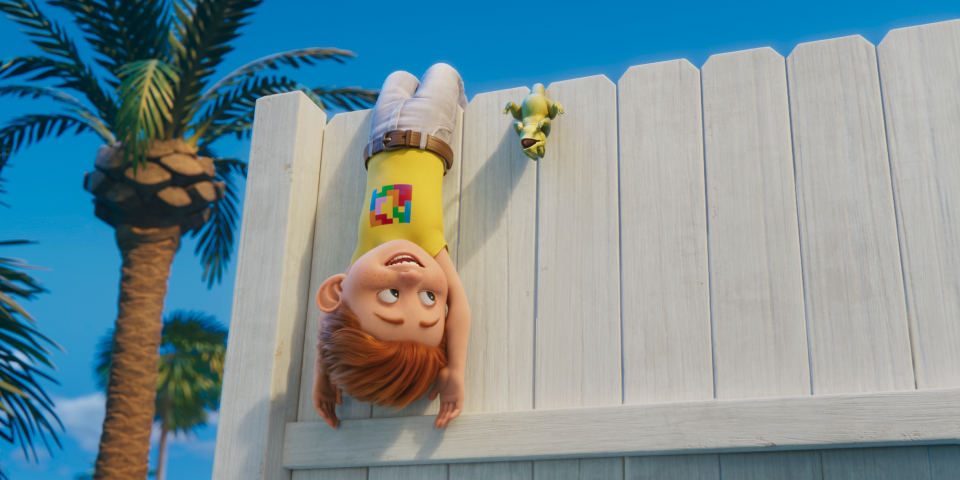An Ill-Advised Screening of ‘Grease’ Led to Adam Sandler’s New Animated Musical ‘Leo’

Leave it to Adam Sandler to deliver the animated surprise of the holiday season with the “SNL”-influenced “Leo” (currently streaming on Netflix). It’s a smart, funny, existential musical comedy about a jaded 74-year-old class pet lizard (voiced by Sandler), who dispenses advice to Florida fifth graders. It’s also a return to the indie roots of his last animated musical, “Eight Crazy Nights.”
But “Leo” is more personal. It’s the second Sandler family affair this year, following “You Are So Not Invited to My Bat Mitzvah”: Sandler’s wife, Jackie, and his daughters, Sunny and Sadie, voice characters in the film. In fact, the genesis of the project occurred when Sandler put on “Grease” for his daughters when they were tweens and realized that it was inappropriate.
More from IndieWire
That got Sandler thinking about doing a musical comedy centered around “Grease” for the fifth grade with long-time collaborator, writer-director Robert Smigel (“SNL”). That eventually morphed into “Leo,” who thinks he’s going to die at 75 and plans an escape from his terrarium to tackle his bucket list, but instead helps his anxious students during their last year of elementary school.
The film is directed by feature newbies Robert Marianetti, Smigel, and David Wachtenheim. All three have worked together since the late ’90s on the “SNL” TV Funhouse cartoons, and Marianetti and Wachtenheim were both heads of story on Sandler’s “Hotel Transylvania 2.”

“There was this whole other idea about a kid from the Bronx who moved to Florida, and it had this one narrator throughout, and you realize at the end that it’s the snake from the classroom,” Wachtenheim told IndieWire. “And so Adam sent it to Robert Smigel and said, ‘What can you do with this?’ and he had the idea that the focus should be on the animal and he’s got something to offer, but he wants to get out and explore the world. And that was the whole genesis of it, and we were brought in because Adam kept giving us scripts because he thought we shared similar sensibilities. We wanted to stay true to his vision for the story and music.”
Sandler’s vision was for Leo to help kids learn to express themselves more confidently before tackling middle school, despite bad parenting, bad teaching, and peer pressure exacerbated by social media. At the same time, the septuagenarian lizard — who’s lived his entire life in the fifth-grade classroom with his cynical terrarium-mate Squirtle the Turtle (Bill Burr) — confronts his sudden fear of mortality by becoming a model teacher.
“We always have to figure out why we are animating this,” Marianetti told IndieWire. “And the talking animal was the entry point. But even so, it’s a small kind of intimate film, which is interesting because originally it was scheduled to be a theatrical film with another studio and we were nervous. Does this feel like a big theatrical movie? We’re all conditioned to think that animated theatrical movies are supposed to be epic and fantastical. But this felt like a little indie film, and so when it came to Netflix, this made a little more sense. And I think Adam has matured as a filmmaker.”
Australian studio Animal Logic, recently acquired by Netflix (“The Magician’s Elephant”), did the animation, mostly out of their Vancouver studio, in a naturalistic way. “We loved Disney animation, but we didn’t want that hyper expressiveness and like all the beautiful arcs that lead into the actions,” added Marianetti. “We wanted to try and capture kids realistically.”

Fun fact: Sandler’s voice for the animated Jewish lizard was inspired by his late manager and producer Bernie Brillstein (who helped launch “SNL”). However, the design of Leo became personal for Wachtenheim: “I kept channeling my dad, who had since passed away, like this one drawing I did kind of as a gag, which was like hunched over with a cane and glasses, like a real old man, but as a lizard.”
Meanwhile, a nice bonus was luring Pixar’s great cinematographer, Sharon Calahan (“Ratatouille”), out of retirement to consult on “Leo” (she’s the only animation member of the ASC). “We knew what we wanted with the lighting, or at least we had an idea of what we wanted but we couldn’t communicate it,” added Wachtenheim. “And there was a little bit of back and forth to try and get what we wanted, and Sharon’s name came up and somehow they talked to her and got her on, and she knew exactly what we wanted and she was able to just communicate it beautifully to them.
“Robert had an idea,” Wachtenheim continued. “He didn’t want to go with super dark, he wanted it to be a pretty brightly lit film throughout, making it more accessible. He didn’t want to try and telegraph things through lighting, he wanted to be more realistic. And she got it and was able to work with a really young crew at Animal Logic throughout. She said to make use of what the available light would be, and so it was just kind of making sure what’s there is popping right.”

The film’s secret weapon, however, was that it was a satirical musical, which Sandler wanted from the outset. And so Smigel crafted a spoof of movie musicals with his original songs (channeling “Mary Poppins”). This gave Wachtenheim and Marianetti the opportunity to choreograph some quirky dance sequences with the animators (such as the Busby Berkeley-inspired “Extra Time” sung by the meddling dermatologist voiced by Jason Alexander) and to get more stylized with the animation (including some imaginative 2D from the company that they own).
Yet there’s one hysterically funny song, “Don’t Cry,” with Sandler at his best, which the team had to fight to keep in the film. “There were concerns — a lot of people didn’t quite understand it because of the conventions of animated films,” Marianetti said. “Execs were like, ‘Oh, you can’t tell kids not to cry.’ They were missing the broader point. So we made sure we really laid the foundation with Leo and Squirtle and how the payoff really hits better at the end now, too. But we screened it in Chino with the animatic storyboards and nothing else, and kids were applauding that song.”
Best of IndieWire
Martin Scorsese's Favorite Movies: 80 Films the Director Wants You to See
The Best Animated Series of All Time: 'Daria,' 'Cowboy Bebop,' 'Scott Pilgrim Takes Off,' and More
Sign up for Indiewire's Newsletter. For the latest news, follow us on Facebook, Twitter, and Instagram.


